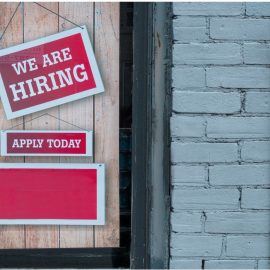

This article is an excerpt from the Shortform book guide to "Quiet: The Power of Introverts" by Susan Cain. Shortform has the world's best summaries and analyses of books you should be reading.
Like this article? Sign up for a free trial here .
What does groupthink look like in action? How do groupthink examples show how collaboration can go wrong?
Groupthink examples exist in many settings. Despite the emphasis American society places on teamwork, these efforts may lead to poorer ideas.
Read on for groupthink examples in work and school.
Groupthink Examples
U.S. institutions, including our schools and workplaces, are structured to serve the extrovert ideal. The organizing principle is “Groupthink,” which prioritizes teamwork above all. Groupthink practices, such as “cooperative learning” in schools and open offices and brainstorming in the workplace, are based on the erroneous belief collaboration is necessary for creativity and intellectual achievement.
The Groupthink notion that creativity is the product of teamwork has influential advocates, including prominent author Malcolm Gladwell, who wrote that innovation is “fundamentally social.” Organizational consultant Warren Bennis claimed in Organizing Genius that the “great group” has replaced the “great man.” However, in reality, an exclusive focus on collaboration actually undercuts creativity and achievement.
The Rise of Groupthink in the Workplace
The belief in teamwork above all dominates the corporate workplace. Organizing employees into teams became a popular practice in the 1990s—half of all companies used teams by 2000, while nearly all do so today. Most managers believe teamwork is necessary for success. But this teamwork is one of the reasons behind common groupthink examples.
Some teams work together remotely while others work face-to-face, but all require a large investment in time, which can include online or in-person meetings, retreats, and team-building exercises, brainstorming sessions, working on shared documents, and keeping track of everyone’s time with shared online calendars.
To facilitate face-to-face teamwork on site, many companies have implemented open- office designs with no walls or private offices and little or no privacy. While 70% of employees work in an open setting, the amount of space per employee has shrunk by 300 square feet since the 1970s. As one CEO described it, work has shifted from “I” or individually focused settings to “we” settings.
Groupthink in Schools
The demands of business for employees who can work in teams have reshaped teaching—schools are training children via cooperative and group learning methods to fit into the culture of corporate America. So, it is no surprise that you find groupthink examples in these settings.
As a fifth-grade public school teacher in Manhattan explained it, children are being taught that success and respect depend on verbal abilities rather than on originality and insight. “You have to be someone who speaks well and calls attention to yourself.”
Besides teamwork, children are also being taught leadership and managerial skills with an eye to the needs of the business culture. For instance, a third-grade teacher explained how she had put a quiet child who preferred to work independently in charge of the safety patrol so he could practice leadership.
Cooperative learning entails grouping children’s desks into pods to facilitate group activities. There are rules for group work—for instance, one fourth-grade teacher’s rule was that children couldn’t ask a teacher for help unless everyone in their group had the same question, presumably to encourage students to help each other find answers. Even math and creative writing, which used to be thought of as individual activities, are sometimes taught through group work.
The cooperative learning approach supposedly encourages students to take responsibility for their education. However, training all children to function in a corporate or team-oriented environment ignores the skills needed to achieve excellence—for instance, intense practice alone (more on this later).
Groupthink Examples Fueled by the Internet
The trends of corporate teams, open offices, and cooperative learning in schools were fueled by the rise of the Internet and lessons drawn from it.
The internet demonstrated the power of collaboration. Shared intelligence and creativity produced resources such as Wikipedia, the open-source operating system Linux, and the grassroots political organization MoveOn.org. Successful collaborations like these, whose results exceeded the sum of their parts, created enthusiasm for the so-called wisdom of the crowd or hive mind.
The success of online collaboration reinforced the belief in the value of face-to-face collaboration and teamwork in workplaces and schools. However, proponents of teamwork and open-office transparency didn’t consider that online collaboration works differently from in-person collaboration—in-person interactions are more susceptible to Groupthink in problem-solving and to style over substance.
The corporate teamwork environment marginalizes the contributions of introverts, who like to work alone. By contrast, the early Web allowed introverts to work independently on ideas and also share and build on the ideas of others. According to a study of the U.S., Australia, and the U.K., many of the earliest computer developers were introverts who worked alone but contributed to the greater good. For example, Apple’s Steve Wozniak worked alone on a prototype PC, but he shared ideas with a group called the Homebrew Computer Club.
Alternatives to Groupthink
In spite of its drawbacks, face-to-face collaboration does have some benefits—for instance, studies show that it creates trust more readily than online collaboration does. And sometimes being around people without directly interacting with them—for instance, in a cafe where people are working individually—helps your mind work. But working in a cafe is different from working in an open office because you have some control over your environment—for instance, deciding when to arrive and how long to stay, as well as where to sit and whether to interact with anyone.
The key to effective collaboration isn’t to stop meeting face-to-face, but to improve the process to take advantage of the strengths of both extroverts and introverts. For example, balance the membership of groups with both introverts and extroverts, and assign tasks in accordance with people’s strengths. This can mitigate the reasons behind some of the earlier groupthink examples.
Also, create work environments where people can choose to connect in social spaces or to work alone in a quiet space. In schools, we should teach children to work with others, but also to engage in “deliberate practice” by themselves.
Some companies, such as Pixar and Microsoft, are creating office designs that include a mix of quiet workspaces, meeting areas, and social spaces like cafes where people can talk without interrupting coworkers’ focus. For example, Microsoft offices have sliding doors and moveable walls that employees can adjust to fit the level of interaction they want. These flexible spaces accommodate both introverts and extroverts.

———End of Preview———
Like what you just read? Read the rest of the world's best book summary and analysis of Susan Cain's "Quiet: The Power of Introverts" at Shortform .
Here's what you'll find in our full Quiet: The Power of Introverts summary :
- How society overvalues extroverts
- Why introverts' overlooked strengths are the key to greater success in work, school, and society
- How extroversion caused the fall of Enron






